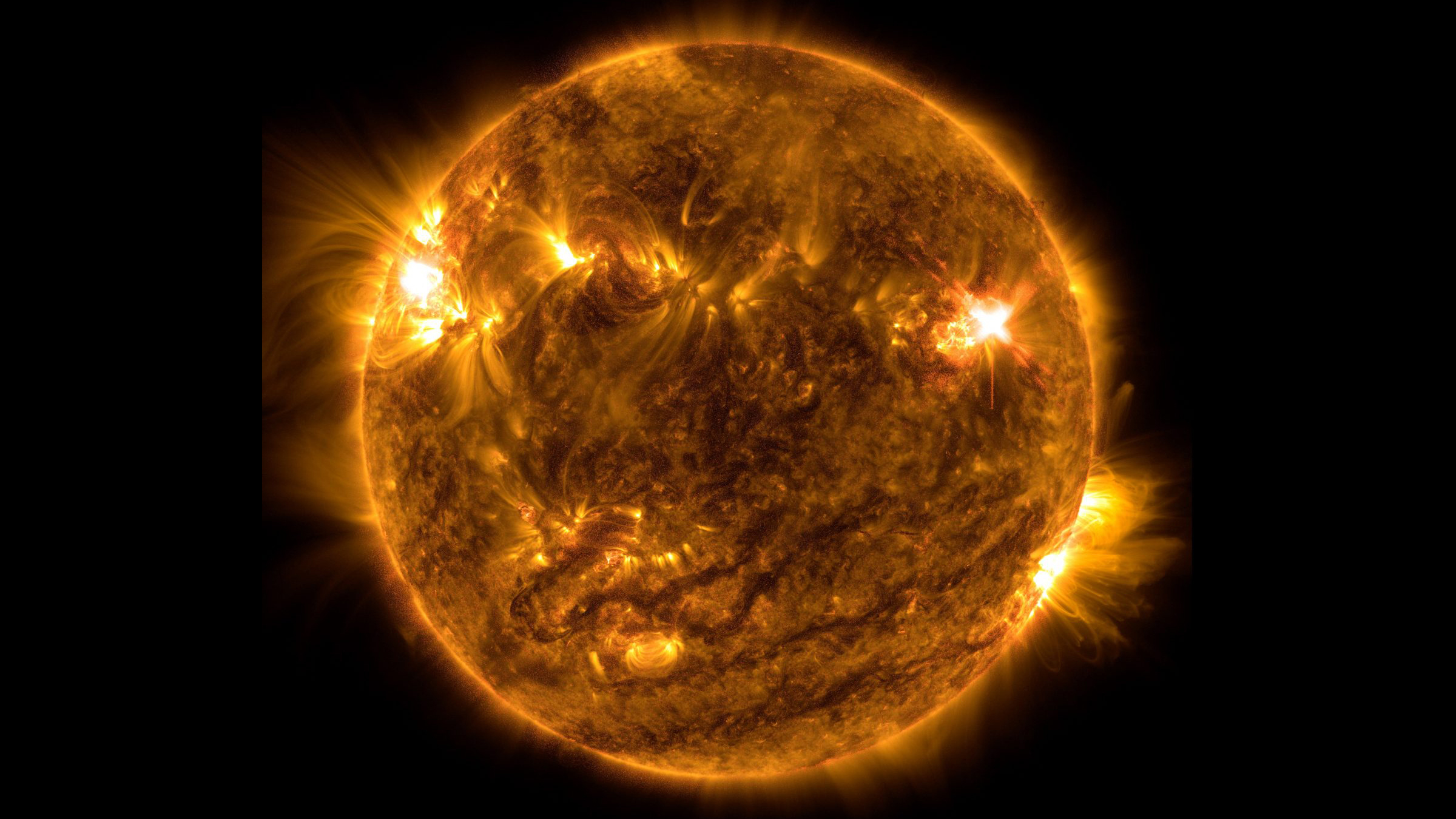
The sun may be a little smaller than we thought it was.
Researchers who measure the sun often use total solar eclipses to block out most of its light and get a glimpse of its corona, or outer atmosphere. This method pegged the sun's radius at about 432,468 miles (695,990 kilometers), a measurement accepted as standard since the 1970s.
But to really understand the sun's physics and atmosphere, more precise measurements are needed. Because the sun is always in motion — it's a churning, convecting ball of fiery plasma, after all — waves are constantly traveling across its surface and through its bulk. In the 1990s, researchers measuring some of the oscillations caused by the waves, known as f-modes, found that the sun was somewhere between 0.03% and 0.07% smaller than the light-based solar eclipse methods suggested. (Different studies returned slightly different values.)
Now, a new study measuring yet another type of solar wave oscillation known as a p-mode confirms that these studies from the 1990s were right: The sun is a little smaller than the standard estimates hold. According to the research, which has not yet been peer reviewed but was posted Oct. 17 to the physics preprint database arXiv, the sun's radius is more like 432,337.6 miles (695,780 km). That's a diameter of about 864,675.3 miles (1,391,560 kilometers). In essence, both the old f-mode data and the new p-mode measurements point to a similar size, the researchers concluded.
Those numbers are only a fraction of a percent different, but they are important. These waves and oscillations are a peek into the sun's nuclear reactions, chemical composition and basic structure, study co-author Douglas Gough, an astrophysicist at the University of Cambridge, told New Scientist.
Without the right radius, "there's the potential to reach misleading conclusions about the subtle elements of the sun's internal structure," William Chaplin, a professor of astrophysics at the University of Birmingham in the U.K. who was not involved in the study, told New Scientist.
Understanding the sun is important not only because the sun is Earth's most accessible star (and the source of light and heat that makes life possible) but also because magnetic storms from the sun's surface can affect Earth's telecommunications. NASA's Parker Solar Probe is currently orbiting seven times closer to the sun than any other spacecraft ever has, in an effort to understand the solar wind that brings charged particles in contact with Earth's atmosphere. The European Space Agency's Solar Orbiter, which launched in 2020, is also investigating solar winds and will take the first close-up pictures of the sun's polar regions.







